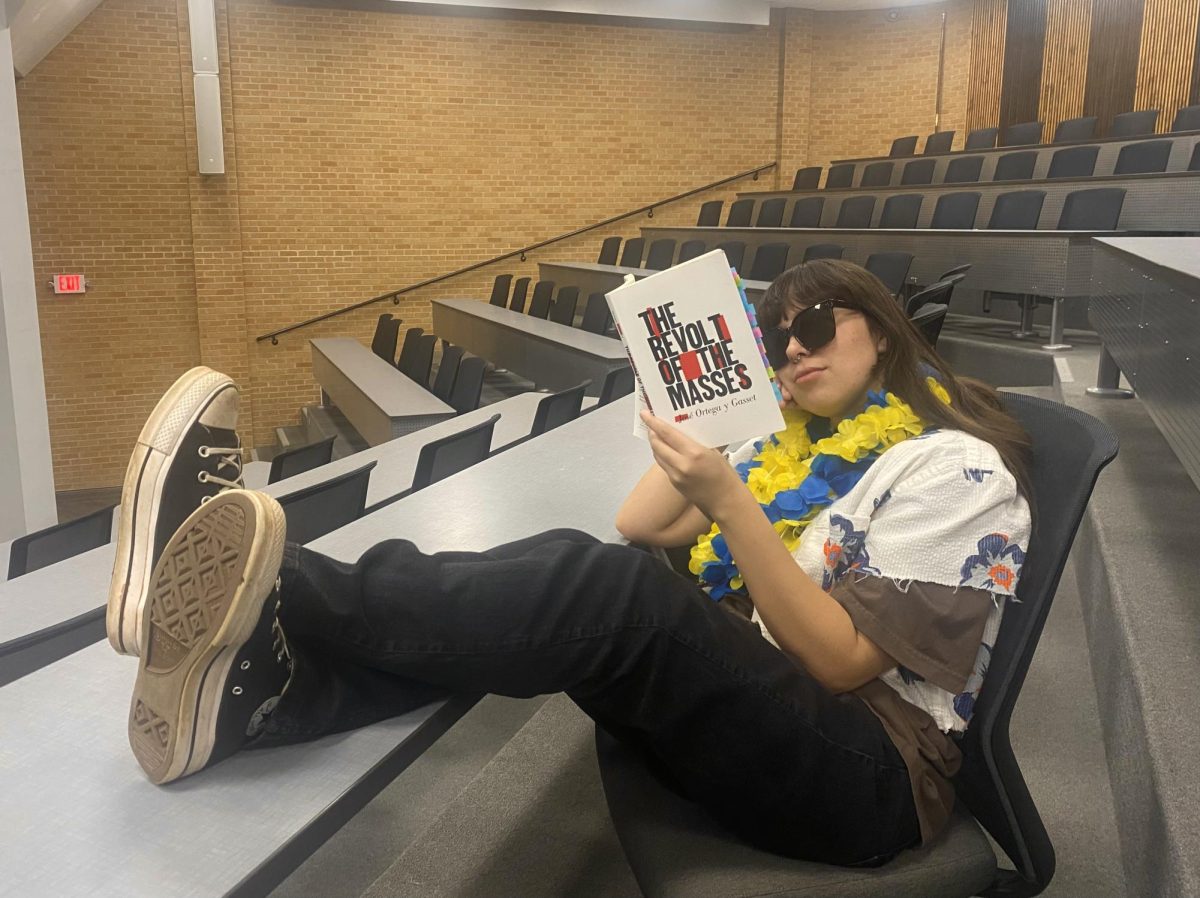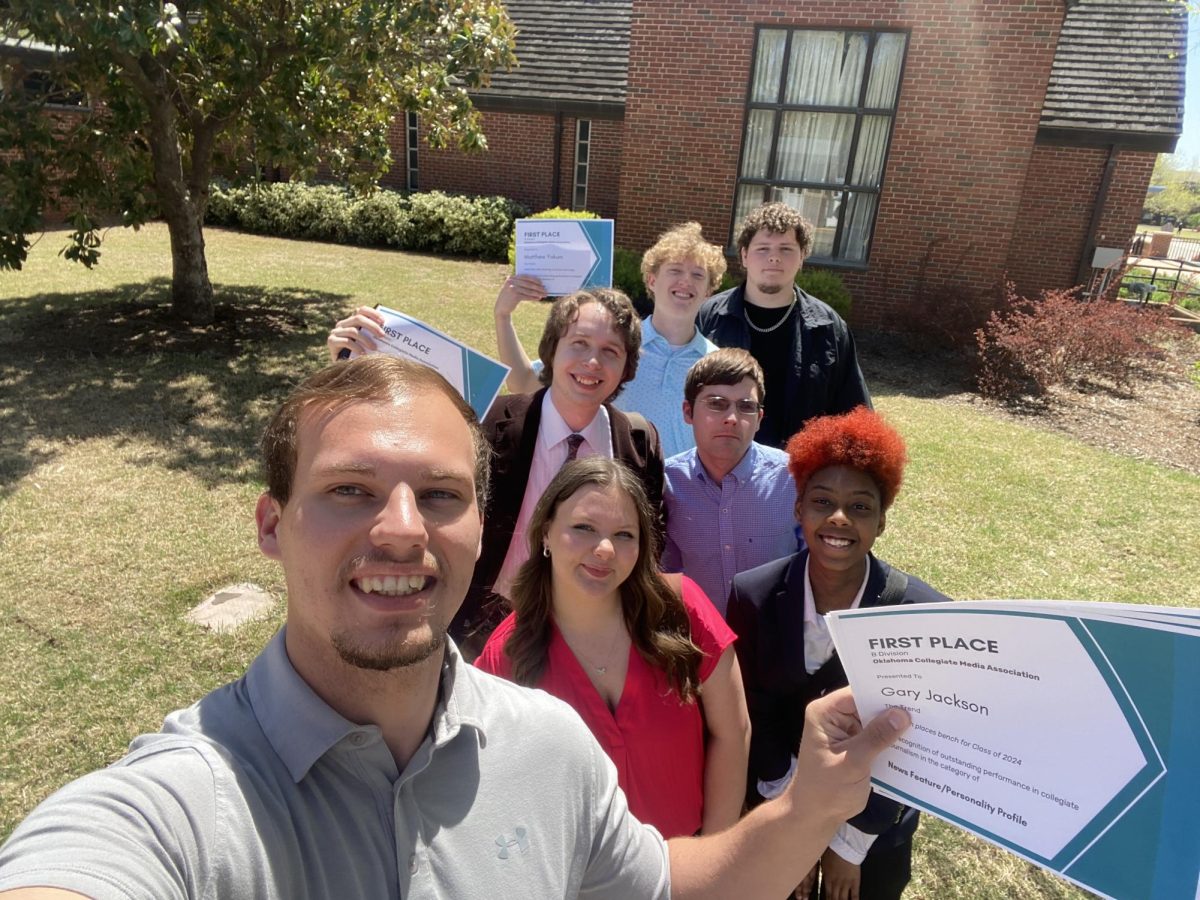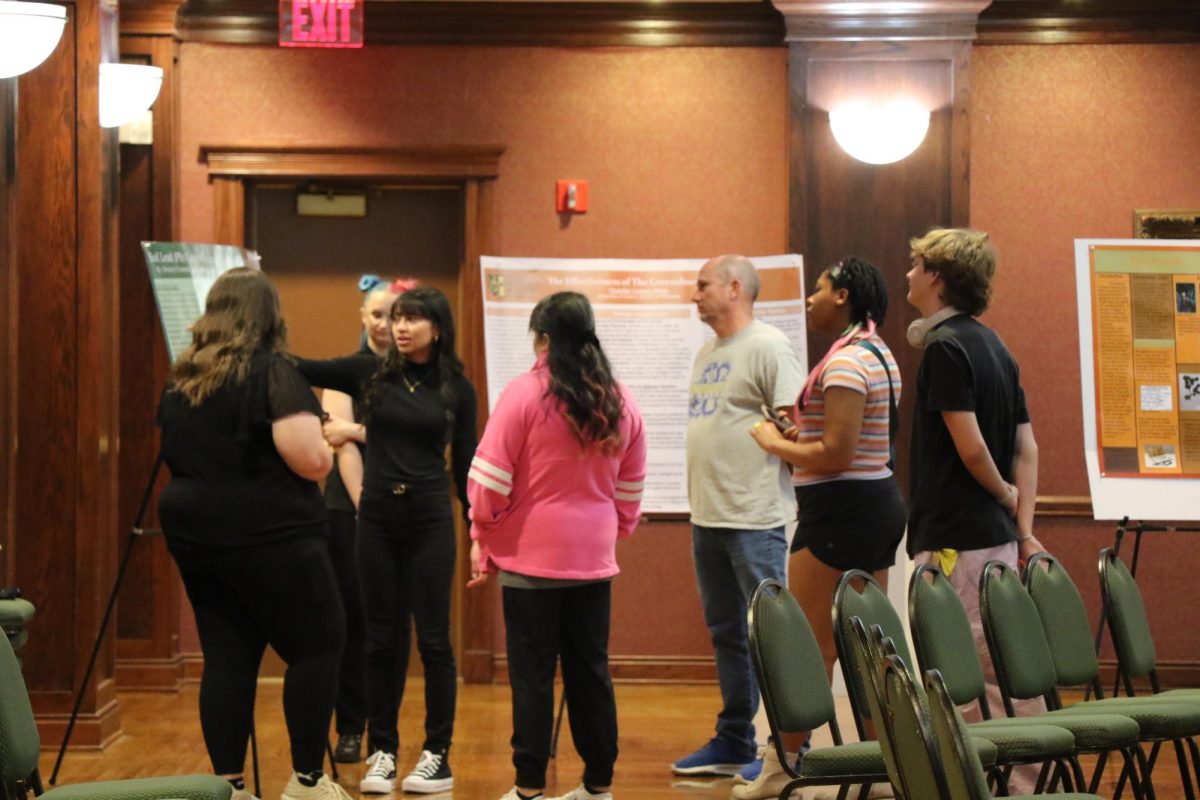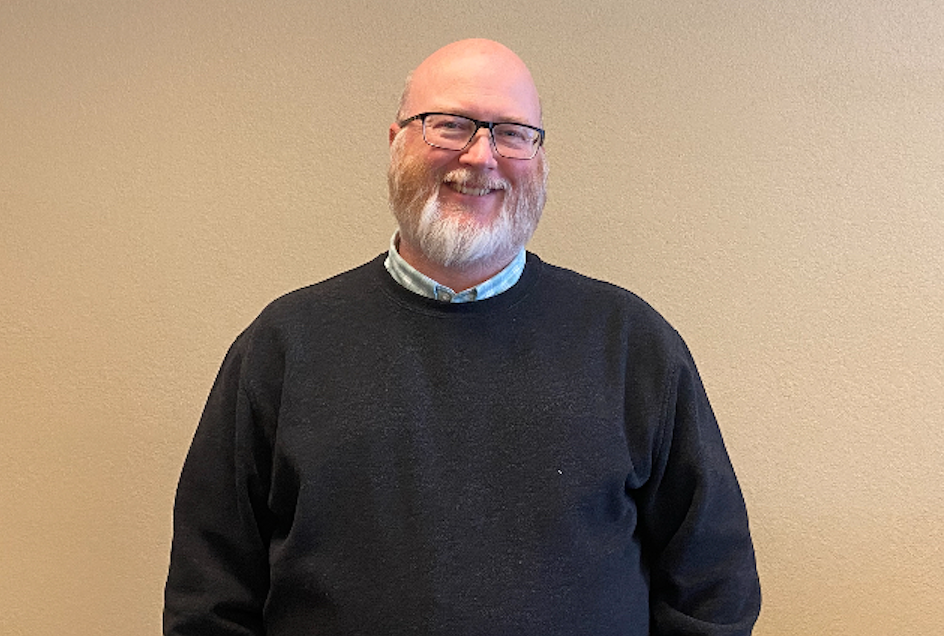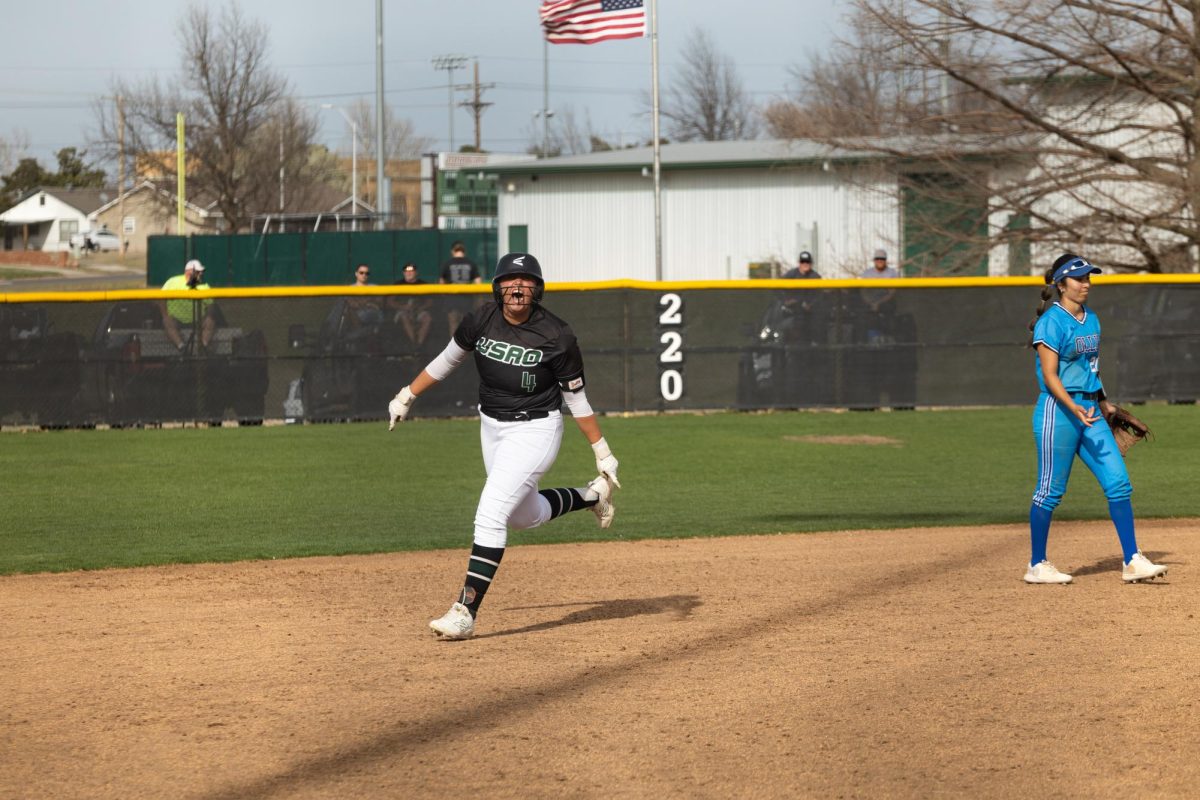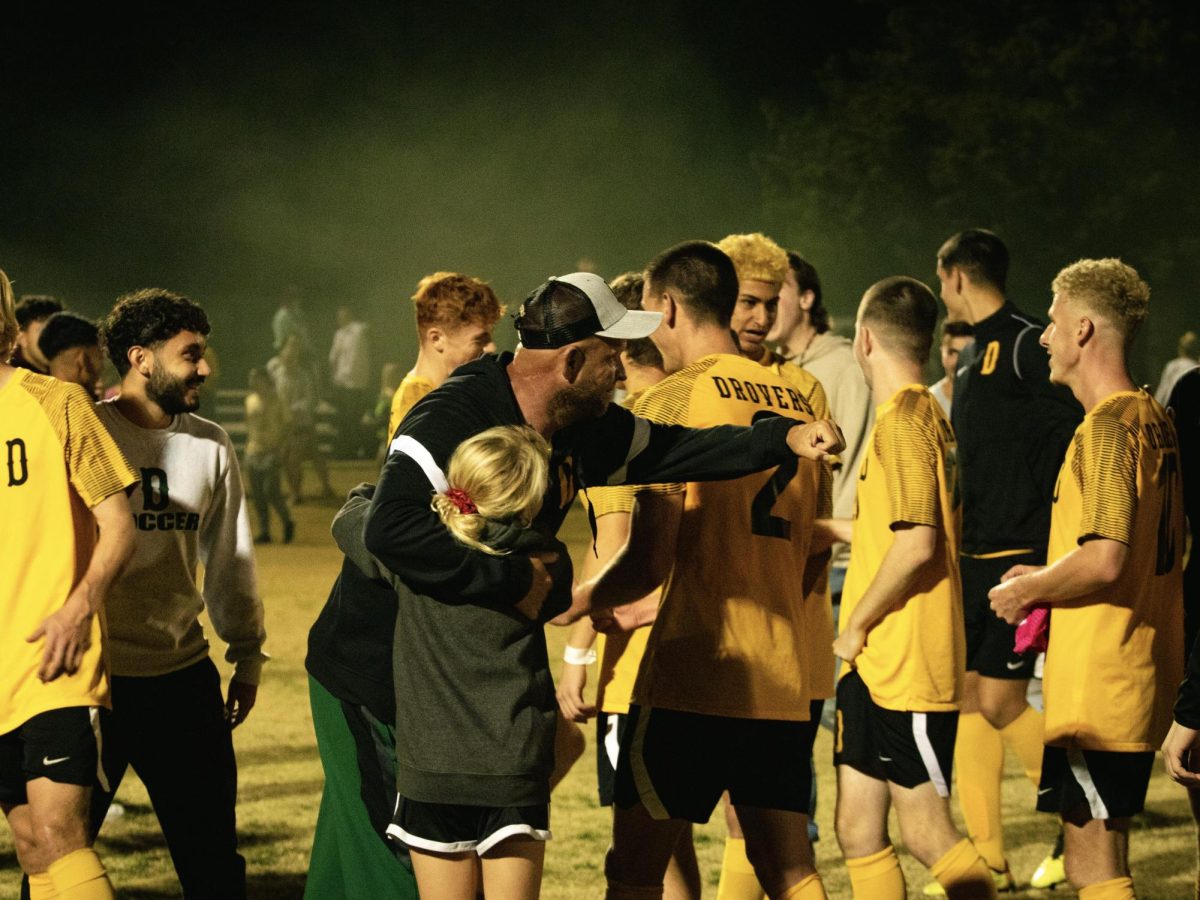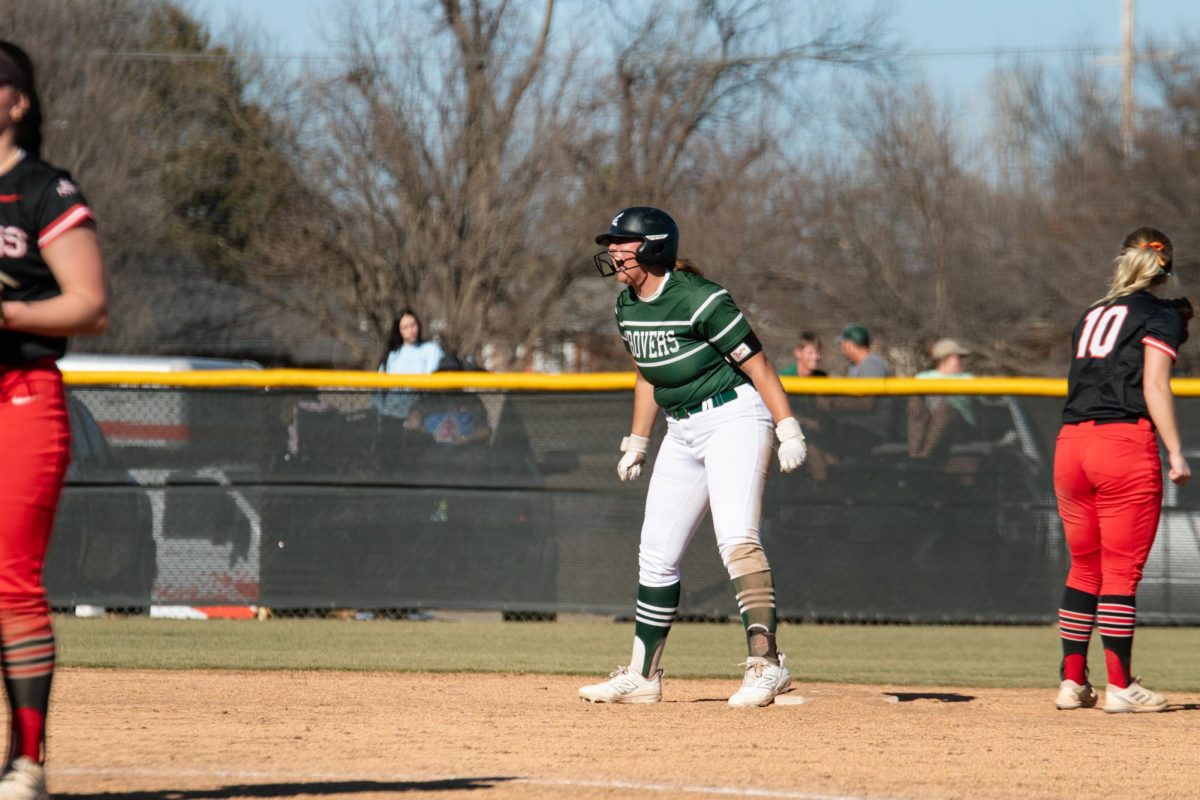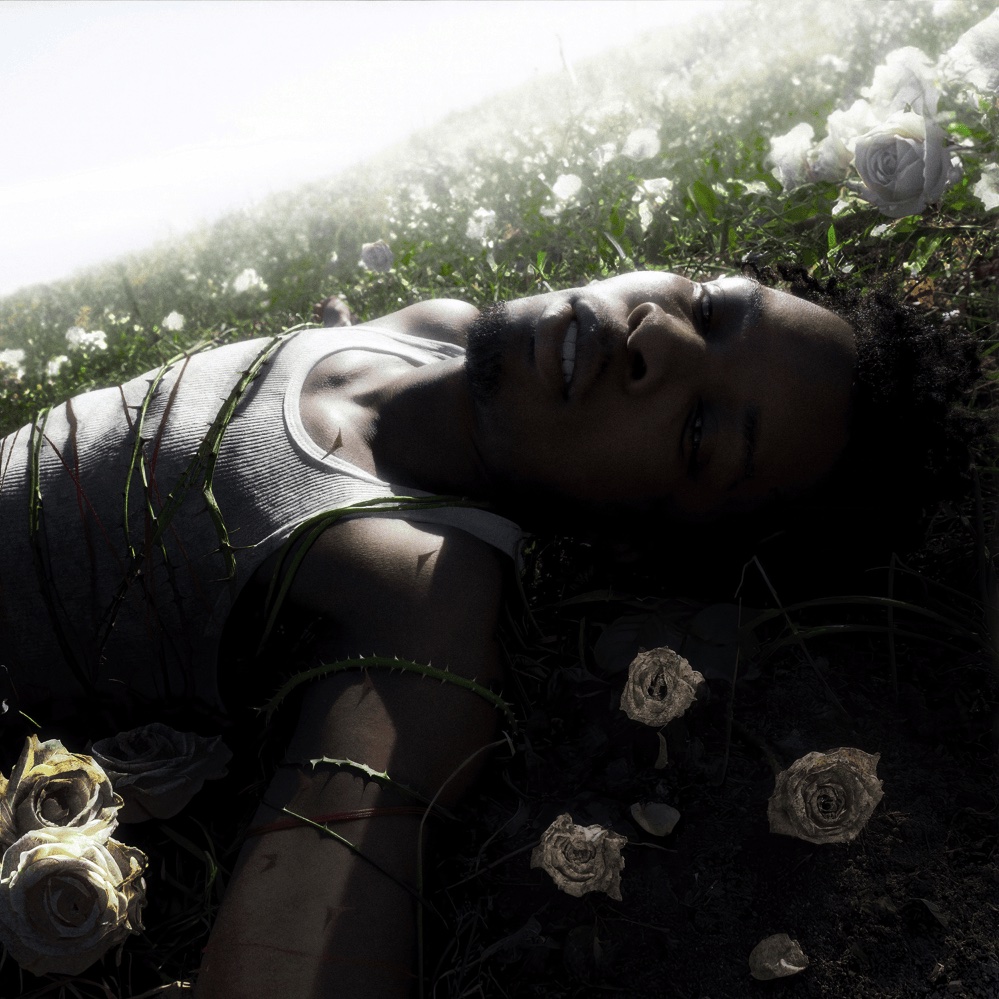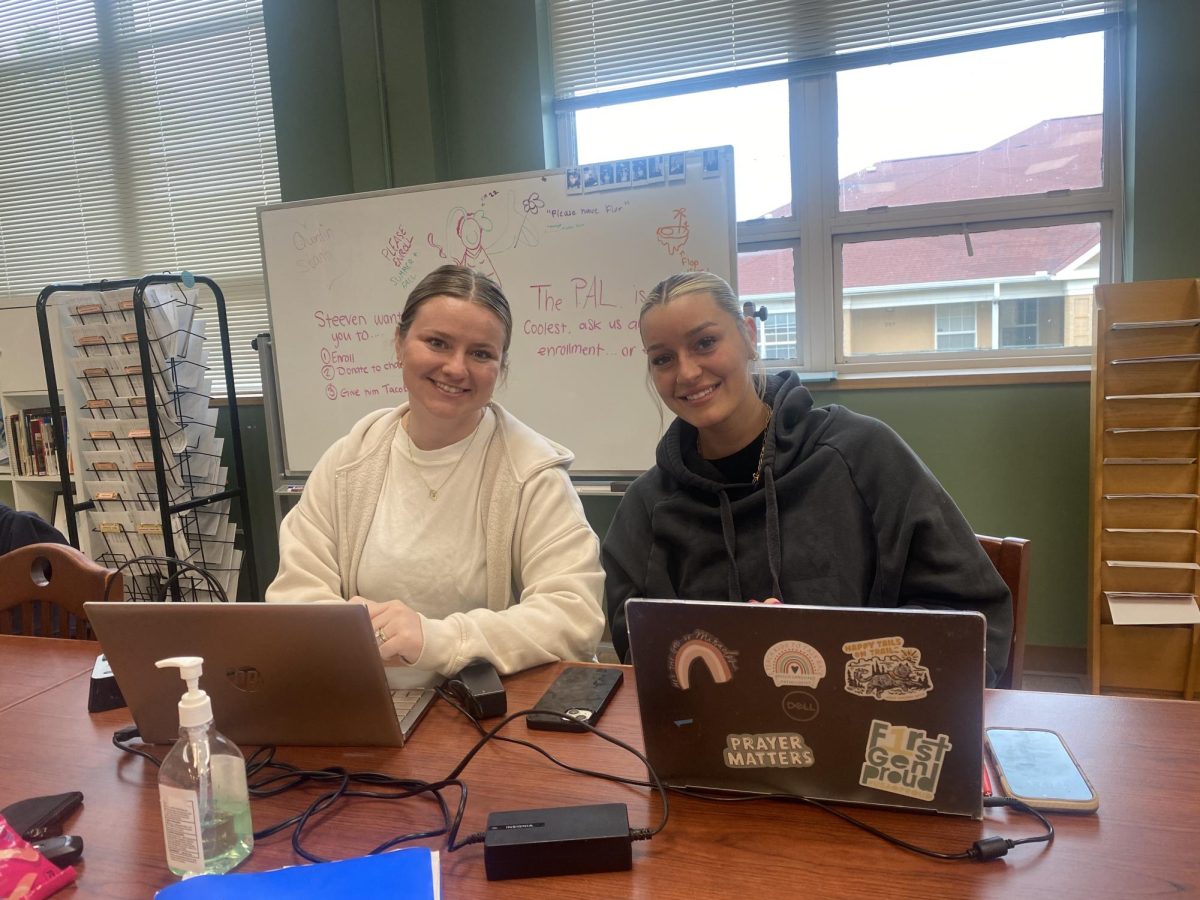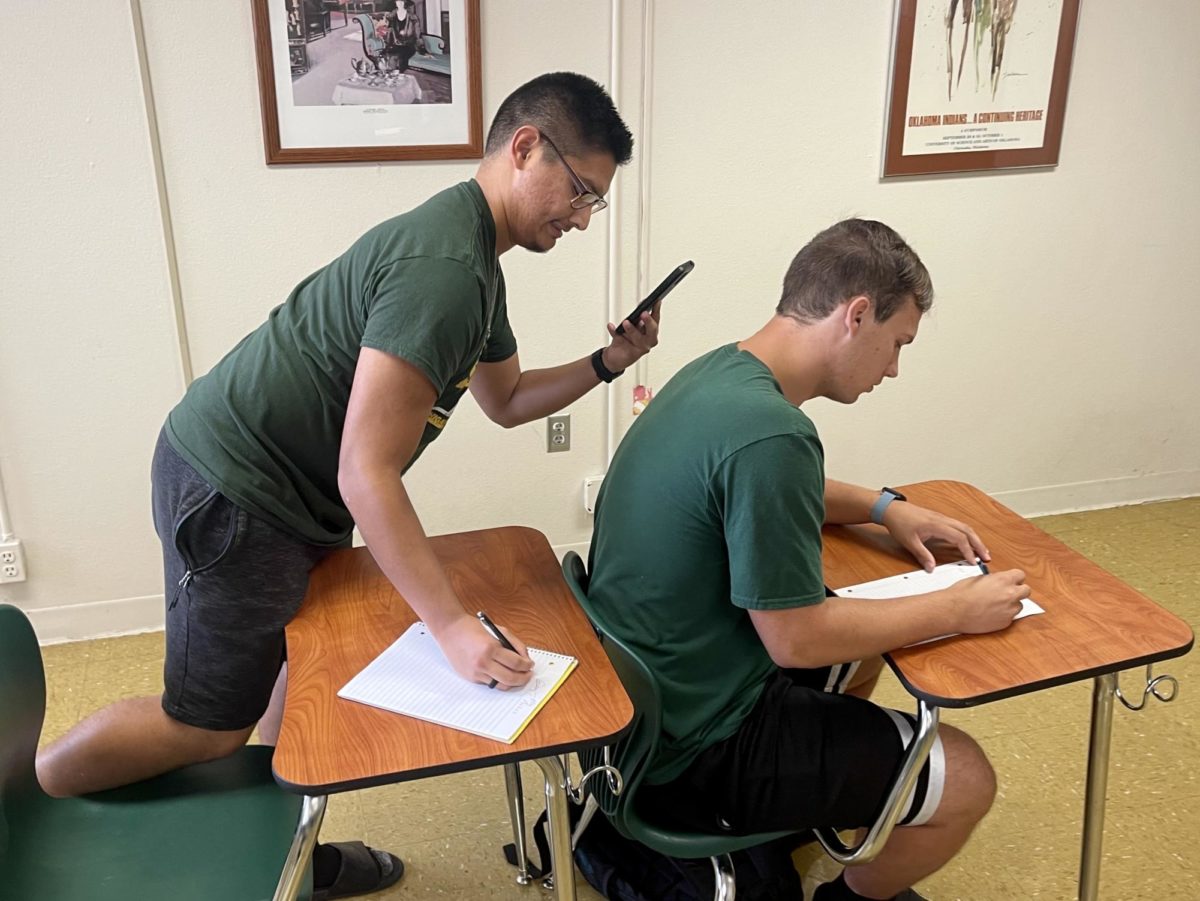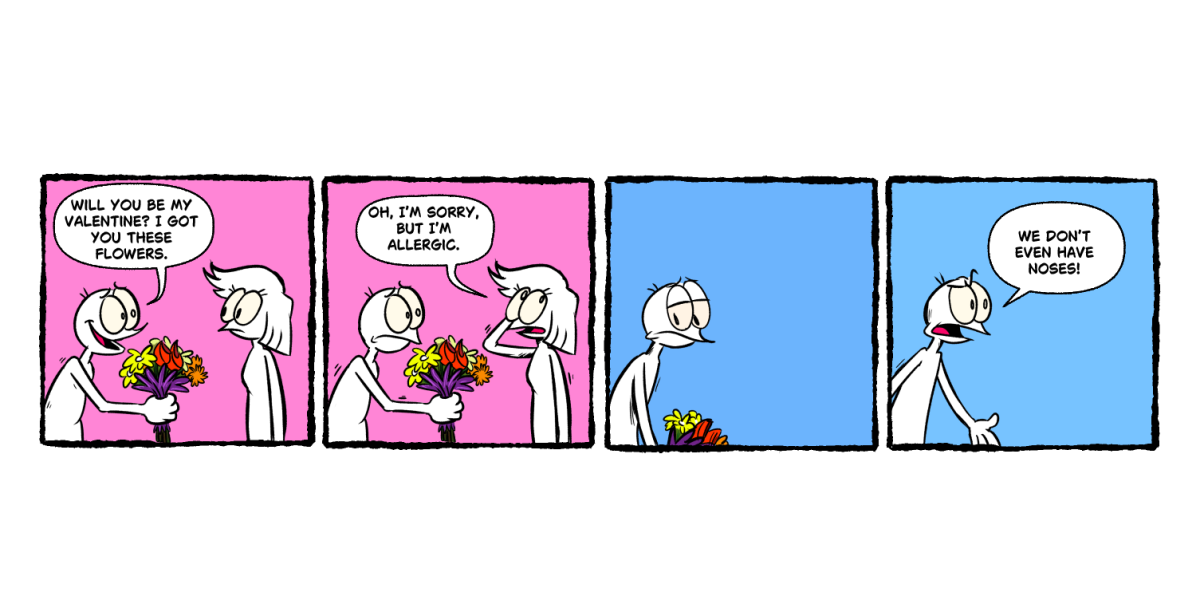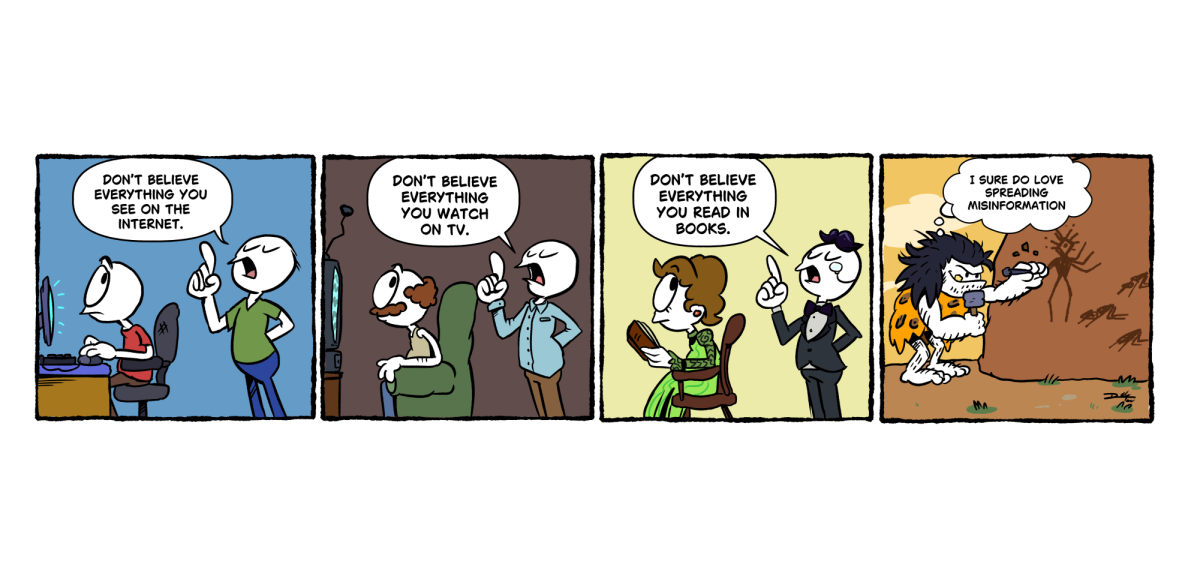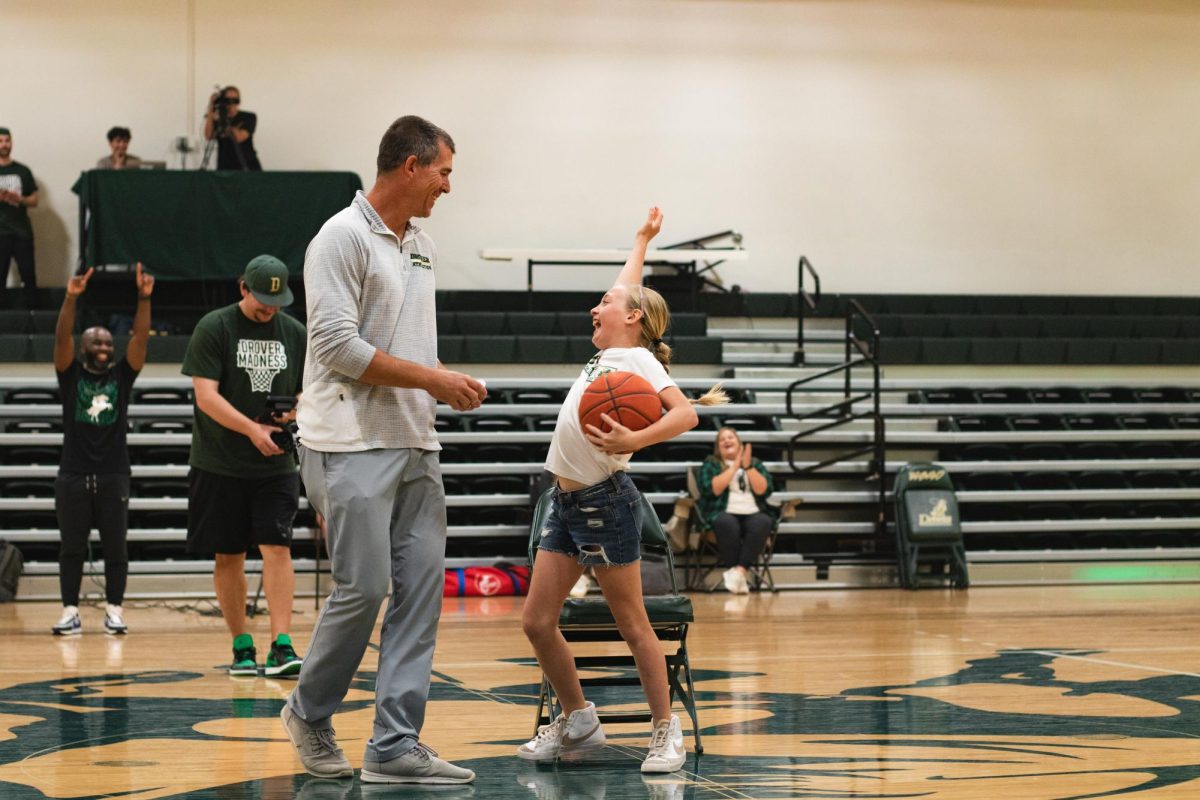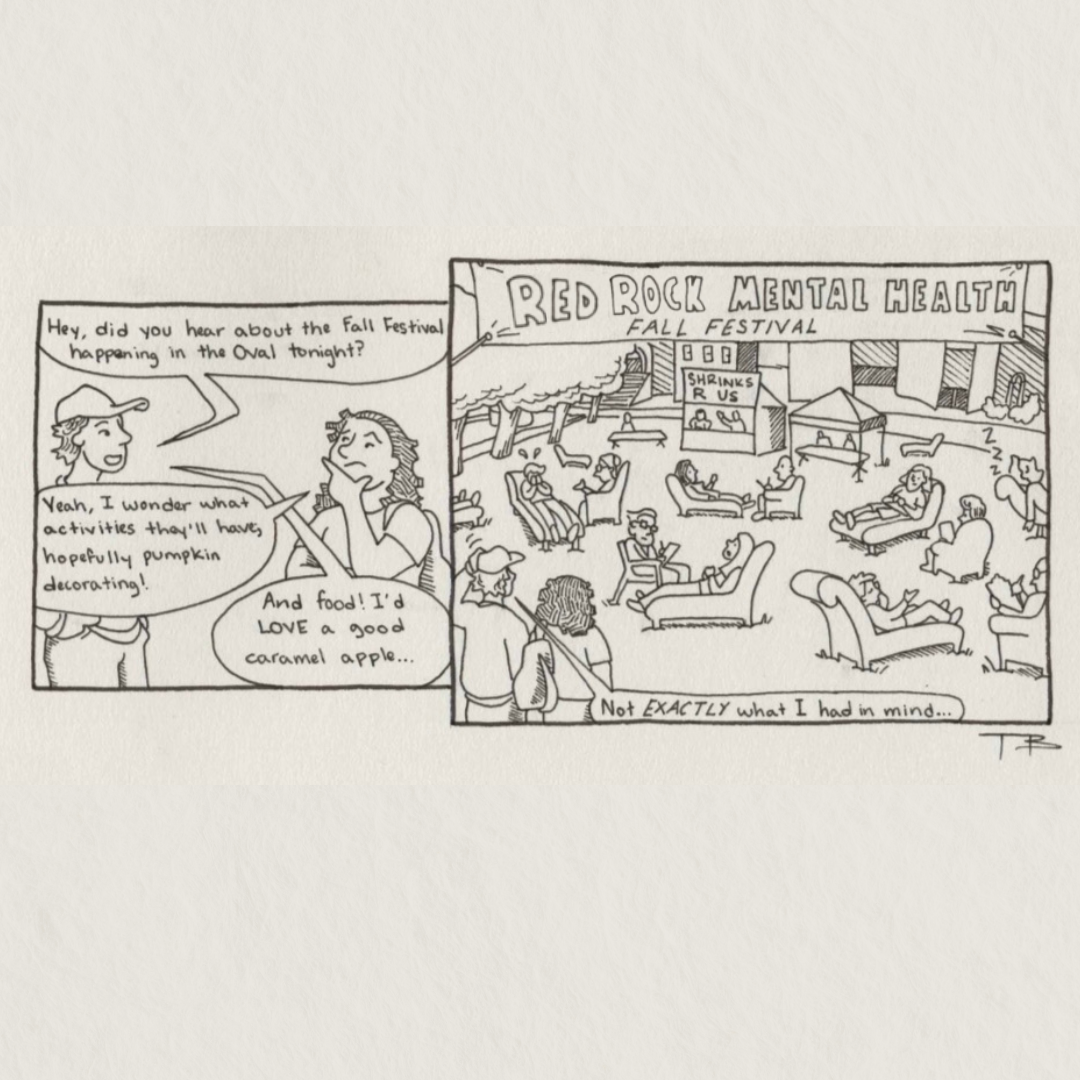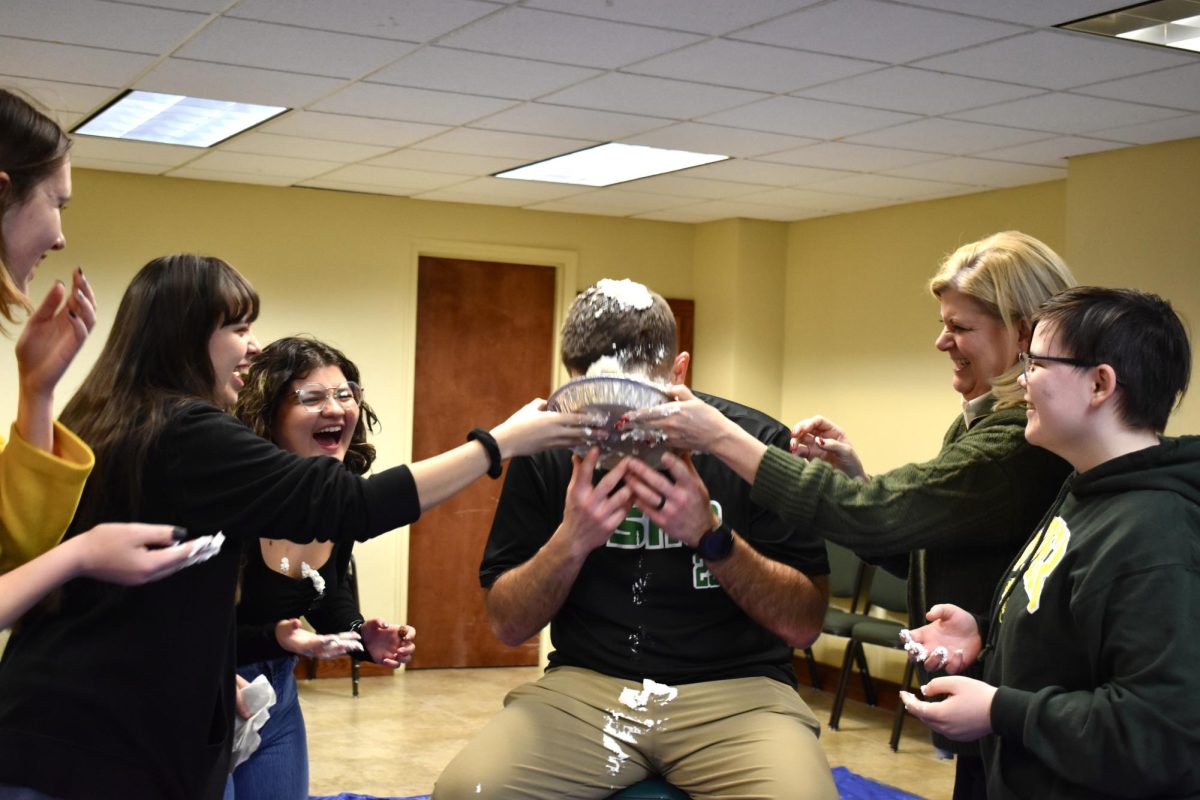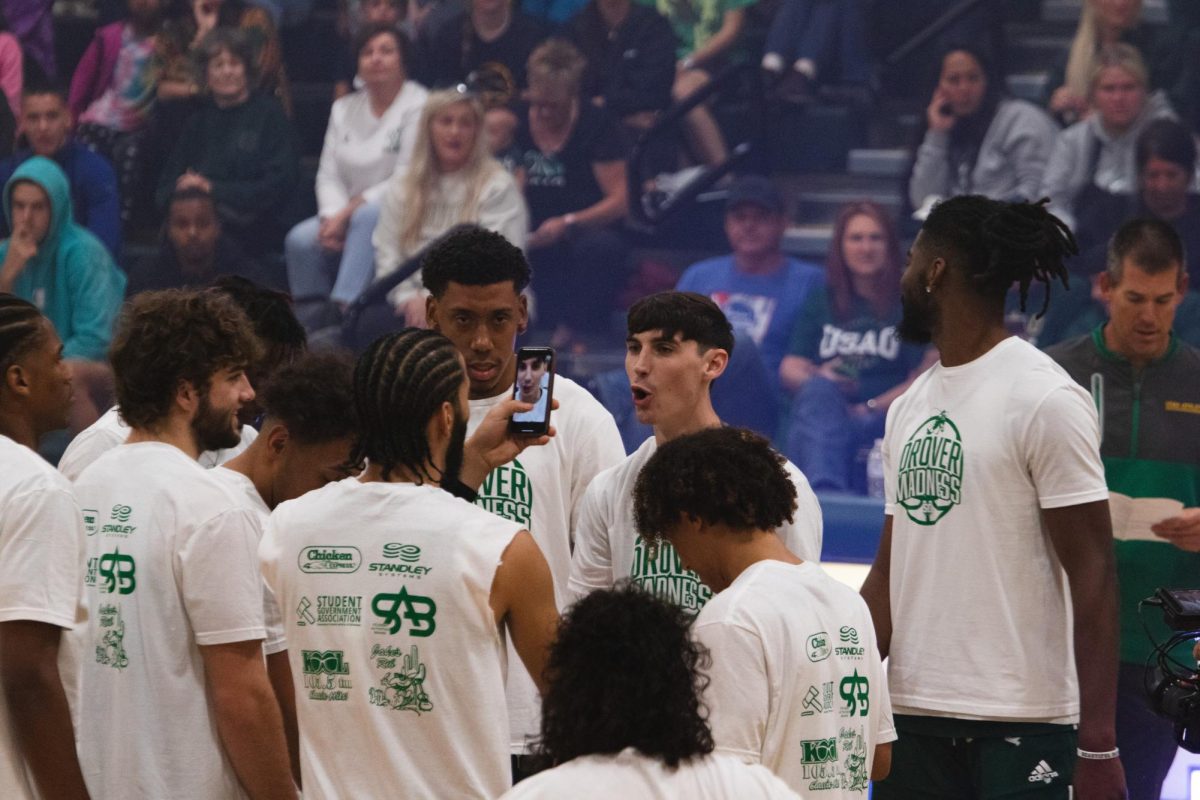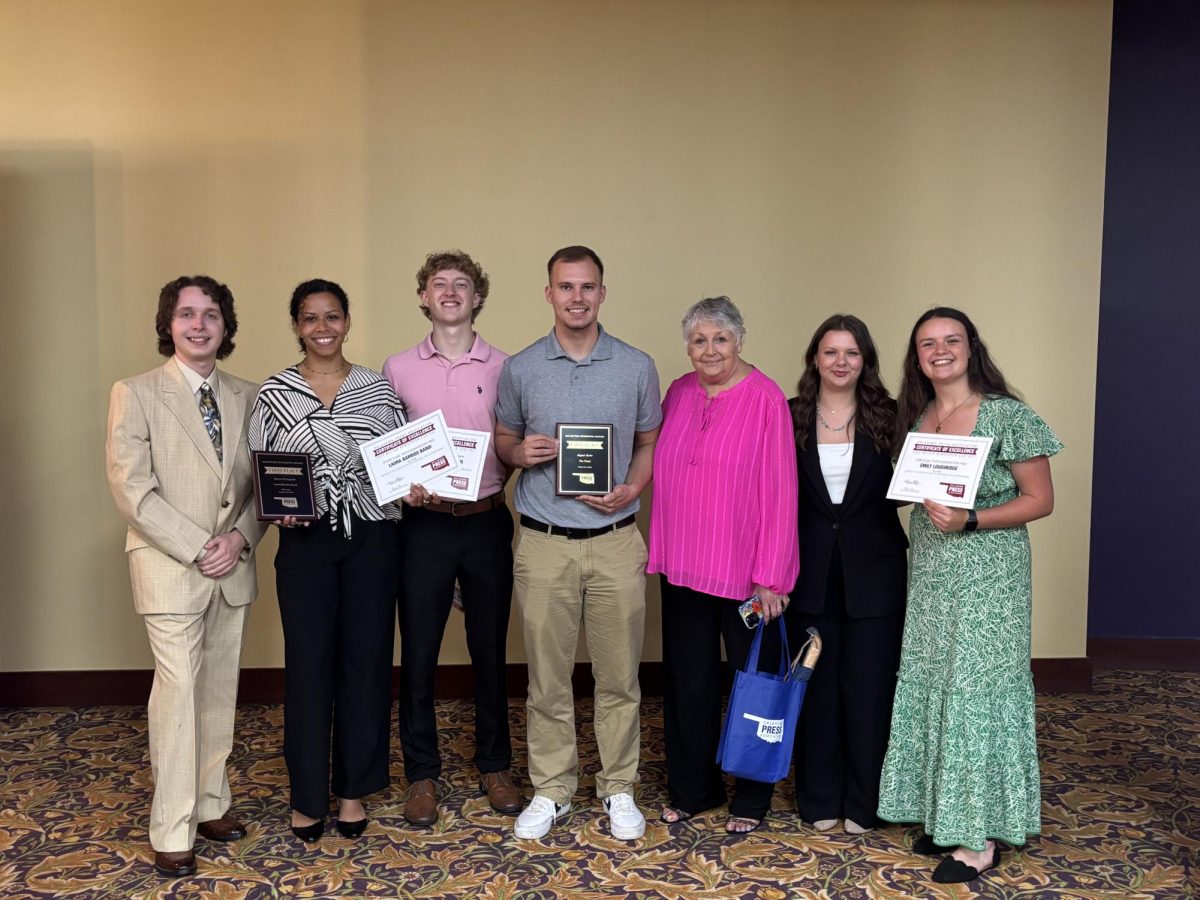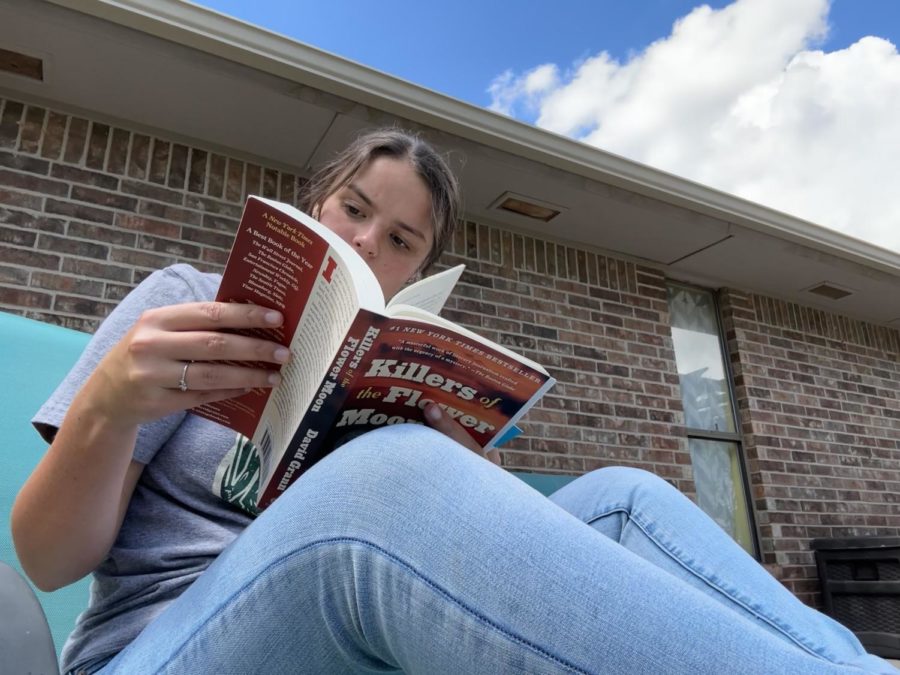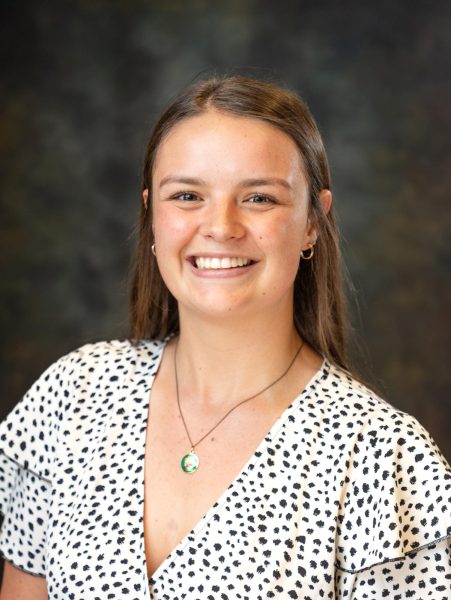“Killers of the Flower Moon” (Book Review)
Emily Loughridge soaks up some sun while reading “Killers of the Flower Moon.” What are her thoughts on David Grann’s book?
May 22, 2023
David Grann, a #1 New York Times bestselling author and an award-winning staff writer at The New Yorker, visited USAO’s campus March 3 for the annual Giles Symposium. Grann talked about his book, “Killers of the Flower Moon,” the journey he went through to discover the story, and how the events within the book have impacted generations of Osage people. After listening to Grann talk about pieces of the story, I was intrigued and wanted to see how his journalistic nature played out on the pages. The answer? Beautifully.
While I typically enjoy learning about history, in cases I believe it can be dull and read like a textbook. This was not the case for “Killers of the Flower Moon.” The book is split into three sections named “The Marked Woman,” “The Evidence Man,” and “The Reporter.” Each of the sections allows Grann to tell the Osage’s story from a different angle. Additionally, Grann included photographs of the people in the story – to place a face with the name – and photographs of the various locations and other items.
One of the first photos readers see stretches across the top of two pages; the large panel is what prompted Grann to look deeper into the Osages’ story. Grann said when he traveled from New York to Oklahoma, he saw this panel with a missing section. When he asked about it the woman replied that the devil was in that section. To learn who this “devil” is I will make you read the book – no spoilers here!
Section one of the book weaves the tale of Mollie Burkhart, an Osage woman who married a white man, and her family. Each member of her family had a headright, which meant they earned money from the enormous amounts of oil under the Osages’ land, and over time each of them were murdered until Mollie was standing alone. One sister was shot in the head, another’s home exploded, it is believed that her mother was poisoned, and Mollie toed the line of death herself for a while. Mollie’s family was not the only Osage family dealing with mysterious deaths – the entire tribe dealt with death.
Section two looks into the birth of the modern-day Federal Bureau of Investigation (FBI) and the key figures who built the program. In this section, Grann takes a step back from Mollie’s situation to look into how the U.S. was dealing with the reports of mysterious deaths. Many people were sent to help, but their search for the answer did not find success until Tom White, a former Texas Ranger, entered into the picture. White found a tangled web of who was in cahoots with another, dead ends, and half worked out answers from the previous investigators. He set up a team of undercover agents to slowly work themselves into the community and get close to potential suspects while searching for answers on his own, as well.
White eventually found an answer to several of the murders, and it was an answer that shocked an entire community of people. White had found the “devil,” but he struggled to find concrete evidence and stable witnesses to put the “devil” behind bars. In the end a choice was made – one you will have to read to find out – but it never fully answered for all of the murders.
Years later, in section three when Grann comes into the picture, he found that many children and grandchildren continued to struggle with the unknown of what happened to their families nearly 100 years ago. The sick, twisted process that guardians went through to obtain the headrights of the Osage people left me with a pit in my stomach and a continuous swirling thought: How could a person do this to another person?
While the story will leave you with a heavy heart and grief for people you most likely do not know, it also provides you with a new outlook on life. It left me curious, asking questions, and wanting to learn more about the people around me. This story has left ripples through generations of people within my state and country, and I had never heard about it before.
A last note, “Killers of the Flower Moon” has landed in the spotlight recently, even though it was published in 2017, because a movie adaptation of the book will be released in early October 2023. Grann and the Osage people worked to make the movie as accurate as possible; At the Giles Symposium, Grann said real Osage people will be in the movie and scenes were shot on Osage land. While the movie sounds impressive already, I cannot stress how much better books are than movies. So, read the book before you purchase your movie ticket.
Emily Loughridge is a third-year Communication major at the University of Science and Art of Oklahoma.


